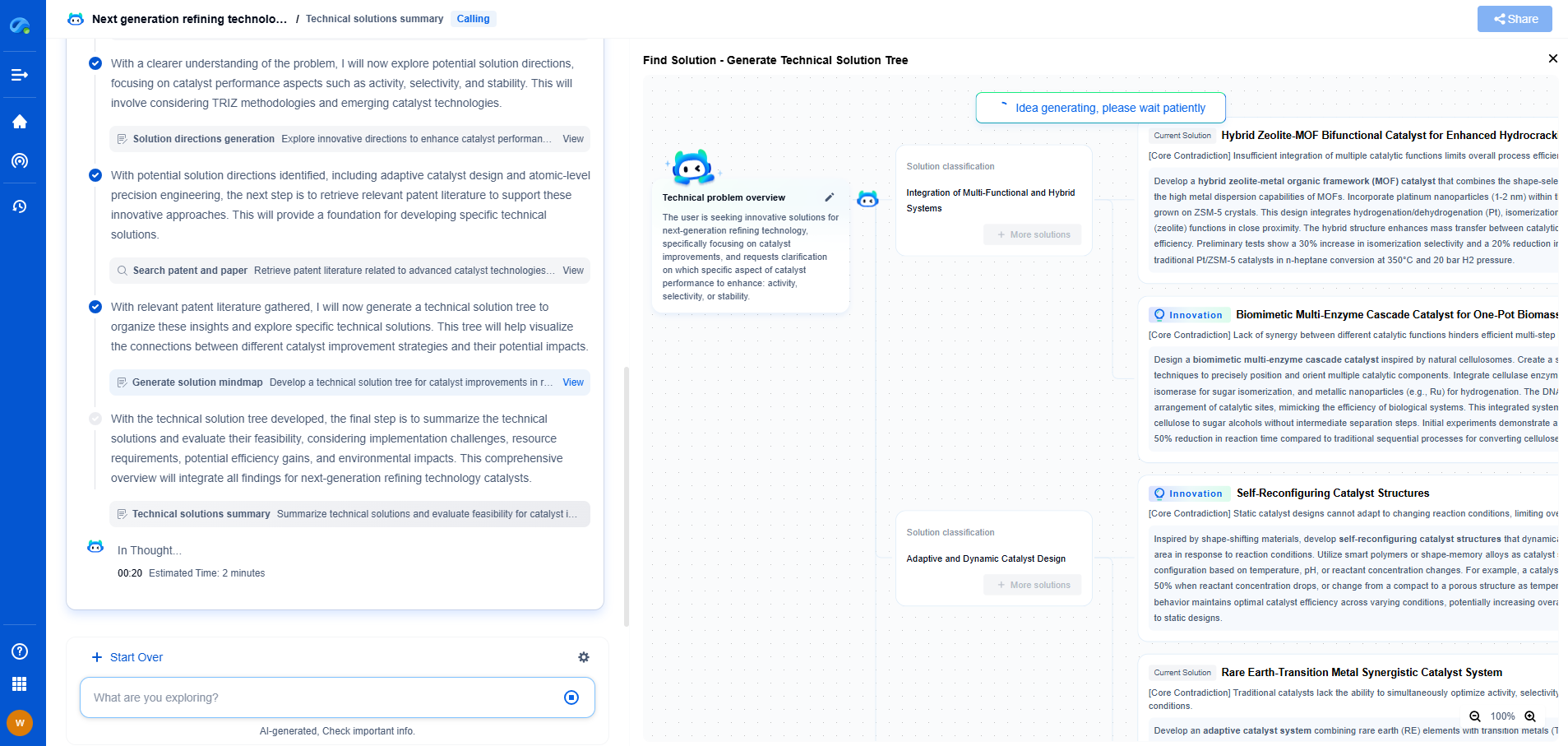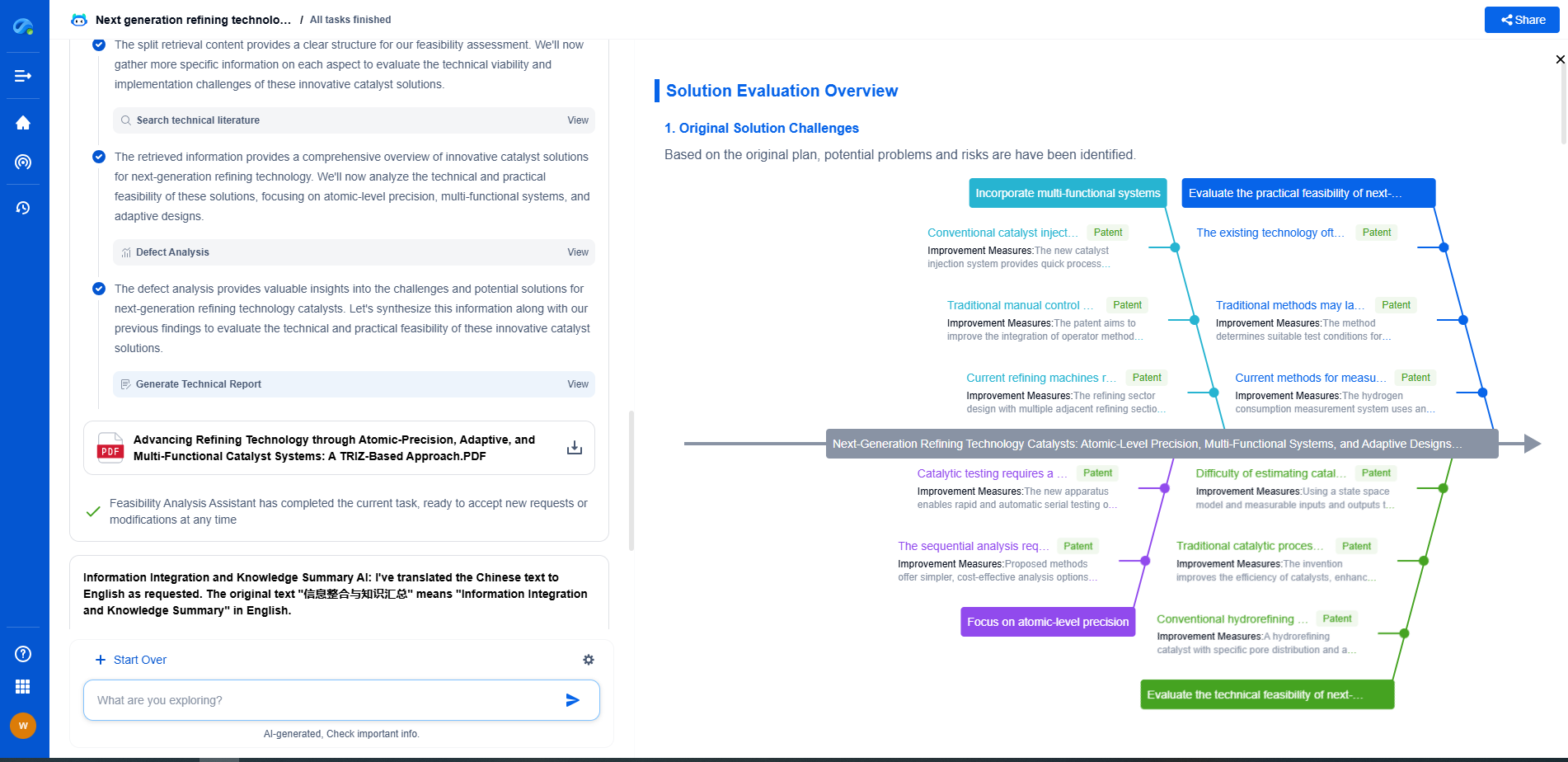What Is a Cathode in a Lithium-Ion Battery? Structure and Role
JUN 20, 2025 |
Lithium-ion batteries have become ubiquitous in modern technology, powering everything from smartphones to electric vehicles. Their popularity stems from their high energy density, longer lifespan, and ability to be recharged multiple times. Understanding the structure and function of these batteries is vital for advancing technology and improving energy solutions. At the heart of a lithium-ion battery is the cathode, which plays a crucial role in its operation.
What is a Cathode?
The cathode is one of the two electrodes in a lithium-ion battery, the other being the anode. During the discharge process, the cathode is the electrode where reduction takes place, meaning it gains electrons. This movement of electrons is what provides power to the device the battery is connected to. The cathode is typically made from lithium metal oxides, such as lithium cobalt oxide (LiCoO2), lithium iron phosphate (LiFePO4), or lithium manganese oxide (LiMn2O4). Each material offers different characteristics in terms of energy capacity, stability, and performance.
Structure of the Cathode
The cathode in a lithium-ion battery is composed of active material particles, conductive agents, and binders. The active material is responsible for storing lithium ions and releasing them during discharge. Conductive agents, usually carbon-based materials, are added to enhance the electrical conductivity of the cathode. Binders are used to hold the active material and conductive agents together, ensuring structural integrity. The cathode is coated onto a metal current collector, typically aluminum, which helps in conducting electricity and provides structural support.
Role of the Cathode in Battery Operation
The cathode's primary function is to store and release lithium ions during the charge and discharge cycles. When the battery is charging, lithium ions move from the cathode to the anode, while electrons travel through the external circuit to the anode. During discharge, this process is reversed: lithium ions move back to the cathode, and electrons flow to the cathode through the external circuit, providing power to the connected device.
The choice of cathode material affects the overall performance of the battery. For instance, lithium cobalt oxide offers high energy density but has stability issues at high temperatures. Lithium iron phosphate provides excellent thermal stability and long cycle life but with lower energy density compared to other materials. Therefore, the application of the battery often dictates the choice of cathode material.
Challenges and Innovations in Cathode Technology
Despite their widespread use, lithium-ion batteries face challenges that researchers aim to address. Cathode materials can degrade over time, reducing capacity and efficiency. To improve performance, scientists are investigating new materials and methods, such as using high-nickel content cathodes or incorporating solid-state electrolytes. These innovations aim to enhance energy density, safety, and lifespan of the batteries.
Environmental Impact and Recycling
The environmental impact of lithium-ion batteries, particularly regarding their cathodes, is an important consideration. Mining the metals needed for cathode production, such as cobalt, can be environmentally damaging. Recycling efforts are essential in mitigating these impacts. Efficient recycling can recover valuable metals, reduce environmental harm, and decrease the reliance on new raw materials. Researchers and industries are working towards developing sustainable recycling processes to address these concerns.
Conclusion
Understanding the cathode's structure and role is crucial for advancing lithium-ion battery technology. The choice of cathode material significantly influences the battery's performance, capacity, and safety. As technology evolves, innovations in cathode design and materials promise to enhance battery efficiency and sustainability, paving the way for more robust and environmentally friendly energy solutions.
Accelerate Breakthroughs in Fuel Cell and Battery Innovation—with the Power of AI
From solid-state battery breakthroughs to high-efficiency hydrogen fuel cells, keeping pace with fast-evolving chemistries, global patent landscapes, and emerging application pathways is an ever-growing challenge for R&D and IP professionals.
Patsnap Eureka, our intelligent AI assistant built for R&D professionals in high-tech sectors, empowers you with real-time expert-level analysis, technology roadmap exploration, and strategic mapping of core patents—all within a seamless, user-friendly interface.
Whether you're optimizing cathode formulations, evaluating electrolyte stability, or navigating the crowded patent space around battery pack design, Eureka empowers you to move faster and with greater confidence.
Start your journey with Patsnap Eureka today—streamline your research, enhance decision-making, and power the future of energy with AI-driven clarity.
- R&D
- Intellectual Property
- Life Sciences
- Materials
- Tech Scout
- Unparalleled Data Quality
- Higher Quality Content
- 60% Fewer Hallucinations
Browse by: Latest US Patents, China's latest patents, Technical Efficacy Thesaurus, Application Domain, Technology Topic, Popular Technical Reports.
© 2025 PatSnap. All rights reserved.Legal|Privacy policy|Modern Slavery Act Transparency Statement|Sitemap|About US| Contact US: help@patsnap.com

